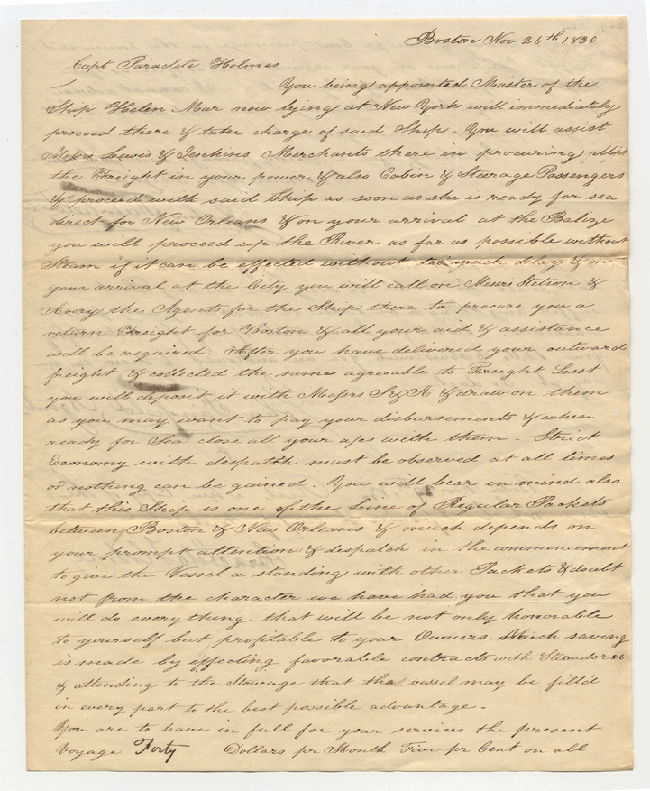A handwritten manuscript, varying in size and composition, which detailed a shipmaster’s responsibilities for an upcoming voyage. These orders were usually signed by the vessel’s agents or owners. The master master’s signature might also appear, indicating that he had read, and/or received his copy of the document. Notary stamps or customs seals are not present since this was essentially a private agreement between the two parties. Formal instructions were not always necessary, and might depend on the shipmaster’s relationship with his employers, or even his financial interest in the vessel he commanded.
Sailing Orders are occasionally found in maritime collections. They are always important research sources, often providing insight in the broadly defined range of responsibilities that the master of a merchant vessel might assume during his voyage. He could be required to do much more than get his ship quickly and safely from one port to another, frequently buying of selling cargo, and otherwise managing the ship’s business until the voyage was completed.

Illustrated is the Sailing Orders given to Captain Paraclete Homes of the ship HELEN MAR, for a voyage from New York to New Orleans, 1830. He was instructed, in part, to assist in procuring “all the freight in your power and also cabin and steerage passengers.” Upon his arrival at New Orleans, he was to work with assigned agents there to get “return freight for Boston,” oversee its stowage, and pay all the ship’s bills before departure. In return Holmes received 40 dollars per month, plus 5% “passage money” and an extra 5% primage on the total value of the homeward freight.
